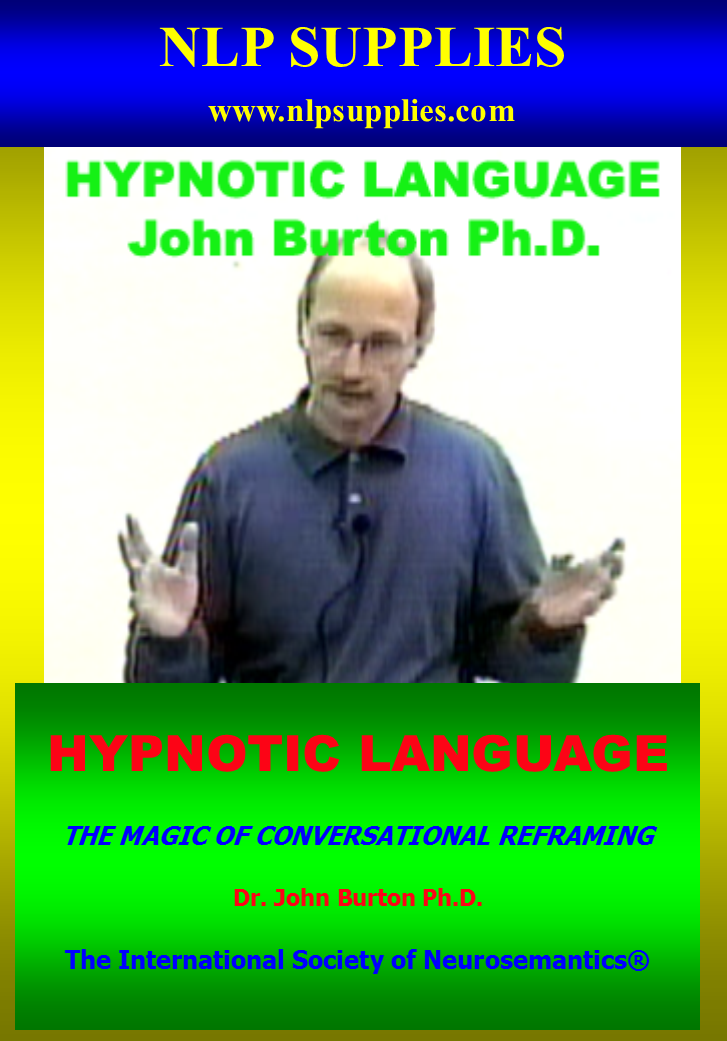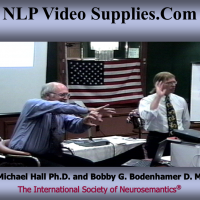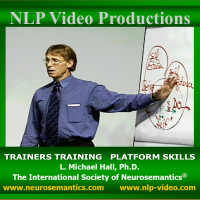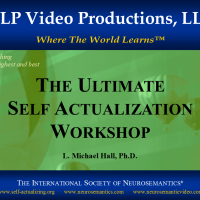Hypnotic Language Download
$59.95 $29.99
Even the invitation to partake in the gustatory trance involves trance through the visual and olfactory senses. The foods we choose and the style of foods we prefer come to be so, in part, because they succeed in ‘trancing’ us. That all communicating involves trance holds true for your other senses. What about the masseuse, the pathway to the intended relief travels through a trance state. You miss the message of the massage if your mind wanders off from the physical sensations to some task or chore you have yet to do. Music induces a trance state with great ease. The composer’ ability to induce through music makes or breaks the acceptance by the listener. Music induced trance makes for one of the most popular and easily accessed kind of trances. What about your nose and trances induced through the olfactory sense? Remember perfume and meals cooking, bread baking? Consider the fairly new realm of aromatherapy? This treatment banks on trance inducing ability of scents for improving health and wellbeing. Scents for the sense to make cents, how do all those words I sent to you sound? Do you like looking at visual stimuli? The artist, whether painter in any medium, sketch artist or photographer seeks to induce a trance in those who view their works.
If the visual aid propels you into a trance and in this trance you experience emotions that appeal, you may buy the work of art for how it appeals. No doubt you can think of many other examples of how communication through any of the senses seeks to cause a trance in the receiver. If effective, then the communication receiver goes into a trance. So what features make some communication more effective than others? In particular, what makes the receiver of linguistic communication respond to the invitation and go into trance? What makes a trance happen through linguistic means and what takes place while in trance that makes this form of communication produce change in the receiver? Several principles of human nature play a role in allowing hypnotic language its’ effectiveness. Two particular elements involved stem from the work of Gestalt Psychologists who study the characteristics of perception. As humans we seem to need some way of organizing the stimuli we sense. Sensing any stimuli takes the form of a rather generic information receiving process in which you detect certain general traits of any stimuli.
If your eyes sense a flat piece of wood about one inch thick, perhaps two feet by four feet in a rectangular shape, suspended above the ground by four cylindrical shaped wooden pieces, what would you call this? Your sensing provides the general information to your brain and then perception gives meaning to the general information. You perceive a table as the result. Humans need to organize stimuli, in part, because it then allows for perceiving and ultimate meaning making by our brain. The thalamus and various parts of the cortex team up for percep tion. So one factor playing a role in giving hypnotic language effectiveness is our apparently innate need to organize what we sense so we can understand what we sense. Hypnotic language takes advantage of a naturally occurring process in humans to influence thinking. The person expressing the hypnotic language knows whatever they convey will have to be taken in by the receiver and the receiver will at least attempt to organize it and make sense of it. Considertheselettersruntogether. Now you feel compelled to decode the letters in the previous ‘sentence’, don’t you. See? You just can’t help it. So hypnotic language just uses the roads already in place, so to speak, rather than trying to pave new ones. By identifying the naturally occurring mental processes you can sort of know the general response someone will have to stimuli. Another feature of mental processing of input is that we tend to lump like kinds of stimuli together. It allows us to keep up with more information that way. We sort of form general categories and include more detailed or specific information within these categories. A few paragraphs ago I included three uses of one synonym, sense, scents and cents.
Once your mind hears one form of the word sense, et. al., you brain goes off on a hunt to determine which one of these possibilities it could be. Whichever one seems to fit the circumstance wins. This innate process provides a pivot point for change. In the past, train yards used what was known as a roundhouse. Not the boxer’s punch but a means of pivoting the train engine to another direction. A roundhouse is a round building with sections of track entering it from four or five different directions. The track at the entrance to the structure touches but does not hook up to the track in the roundhouse. The engine goes into the r oundhouse from one direction and then the roundhouse rotates so the engine can come out aiming in a different direction down a different section of track toward the new destination. The process is rather like a lazy Susan, though creative Susan may be a better adjective attributed to this Susan person. Pivot if you please. So synonyms permit the opportunity for inviting the receiver to shift direction in their thinking. Also recognize that the brain tends to think in terms of puns anyway, Multiple meaning for the same piece of information. The following is an actual event. While being served at an Italian restaurant, the waiter offers the patron some fresh grated Parmesan cheese. Taking the offer, the diner watches the cheese shaving and then determines when they have enough cheese on their dish. ‘That’s great’ (grate), declares the observer. You just can’t help it can you? One category storing multiple meanings for flexible use, very convenient. More information is detailed in the book “HYPNOTIC LANGUAGE” and is available through www.nlp-video.com. The Choice is yours!
Related Products
-
Meta NLP Practitioner Video Training Prep Package Download
Save50%Save $125.00Only$124.99$249.99$124.99 -
NS Trainers Training Download Training Prep Package – Module One- Platform Skills
Save50%Save $237.50Only$237.50$475.00$237.50 -
-






Reviews
There are no reviews yet.